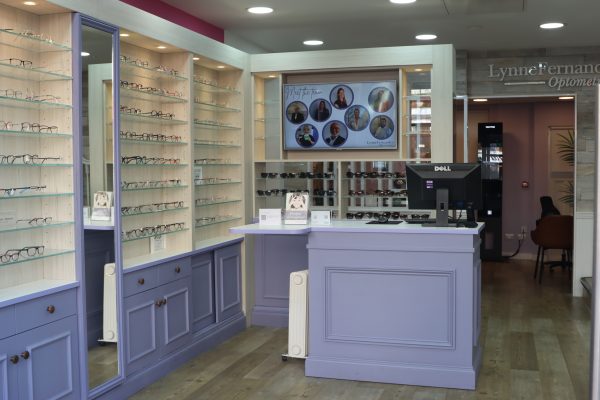What is EyeSense?
We developed EyeSense for patients who value their eye health first and foremost. It enables techniques, equipment and skills far superior to those available under a standard sight test to help to create optimum eye health.

Your specialist optometrist at Lynne Fernandes Optometrists will create a bespoke plan for monitoring your risk of glaucoma with specific, tailored tests, and a programmed regularity of appointments. We call this EyeSense, and it is unique to Lynne Fernandes Optometrists. If you have any concerns about your eyes, you can ring for advice or attend for an additional urgent or emergency appointment. This is all included in your EyeSense plan.
What is glaucoma?
Glaucoma is a group of diseases which cause damage to the optic nerve and leads to sight loss. If detected early, this progression can be slowed down or halted.
Who is most at risk from glaucoma?
There are several increased risk factors, the main ones include: age (people over the age of 40), ethnic origin (African-Caribbean and Asian), family history, people who are short sighted or long sighted and those with diabetes.
If your mother, father or a sibling has/had glaucoma there is at least a four times increased risk that you might develop it also. The most important thing to remember is that glaucoma treatment is very effective when it is diagnosed early.
What are the benefits of EyeSense to those who have an increased risk of glaucoma?
EyeSenseTM provides advanced screening eye care – critical to spot the early signs of glaucoma should it develop and key to help to manage the condition in order to maximise your sight.
EyeSenseTM appointments involve an in-depth eye examination including:
A Sita Fast threshold visual fields test
This computer based glaucoma eye test focuses on your peripheral vision (the part of your eyesight outside of your main gaze) and then it looks at your whole vision to check for any aspects that might not be functioning as they should be. If these tests are carried out frequently the computer learns about your responses and can provide more accurate readings.
Goldmann Applanation Tonometry (GAT)
This looks at the pressure in the eye which is key in detecting glaucoma. A mild anaesthetic eye drop is given and then a blue light is shone into the eye.
Gonioscopy
This is used to assess how successfully the eye drains fluid. If the angle (channel) is narrow you are more at risk of a severe type of glaucoma. This is a technique usually only used in hospital departments.
Dilation and imaging
By dilating the pupil we can more accurately see the internal structures of the eye to assess any changes. It takes about 20 minutes to work and is carried out by putting dilating drops into the eye.
After an extensive glaucoma eye test, we will tailor make a management plan for your eye health needs. However, should you ever need to see us or ask us a question, you are always welcome to book an appointment at any time.


